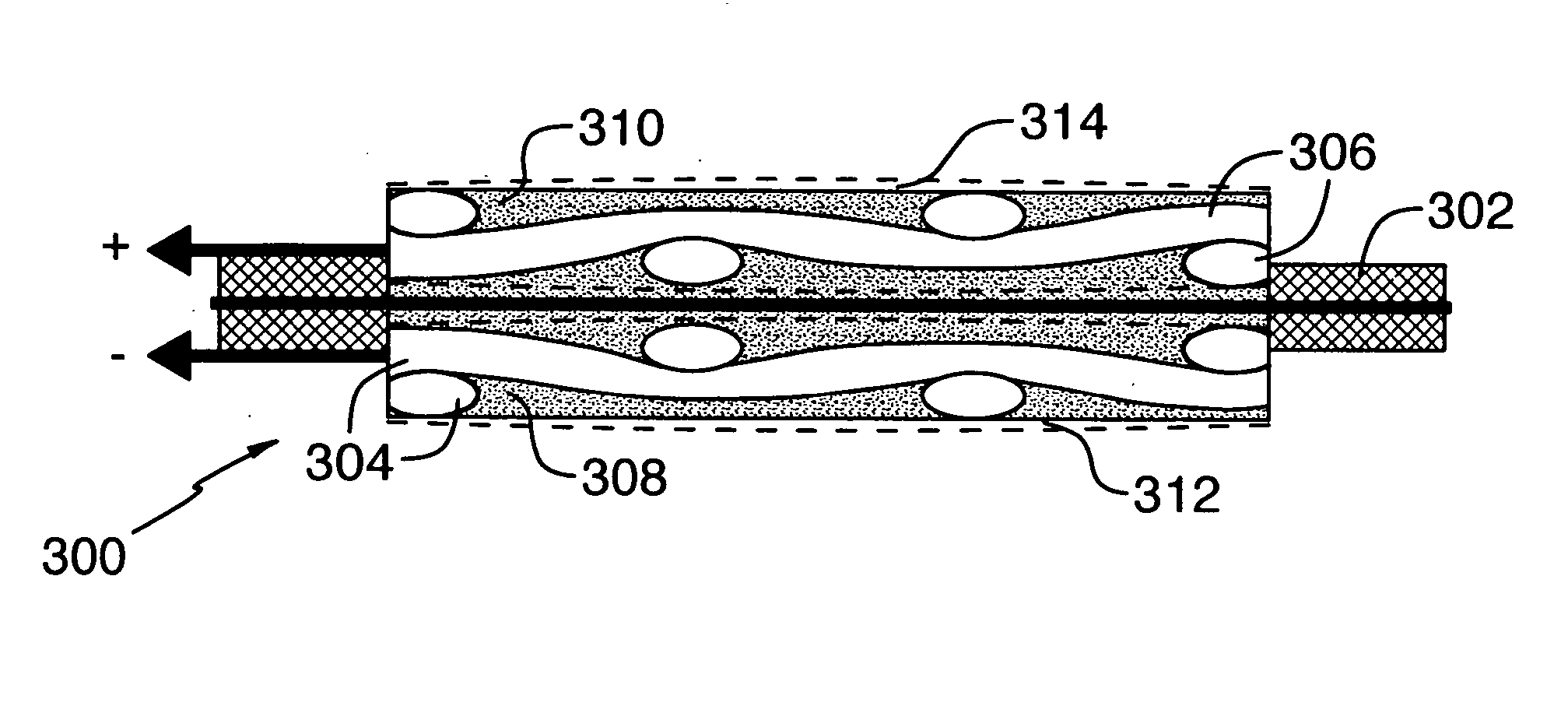Fuel cell
- Summary
- Abstract
- Description
- Claims
- Application Information
AI Technical Summary
Benefits of technology
Problems solved by technology
Method used
Image
Examples
Embodiment Construction
[0060] Table 1 shows a list of nickel and chemical components, their sources, a physical characteristic, and amounts of the components used in the preparation of a gas diffusion electrode according to the invention.
[0061] A gas diffusion electrode was made as follows by: [0062] 1. blending the components in a Banbury mixer in the following amounts:—[0063] Component A—560 g; (90%) [0064] Component B—59.1 g; (9.5%) [0065] Component C—3.1 g; (0.5%) [0066] 2. adding Component D after blending in an amount of 572 mL (20 Vol % of whole weight of the above components) and blended to an homogeneous state; [0067] 3. extruding with the nickel mesh (Component E), placed into the middle of the thickness of the polymer mass which was subsequently calendered to give the desired gas diffusion electrode profile of width and thickness; [0068] 4. locating the profile (band) in a mineral oil removal extraction chamber with solvent, removed carbon tetrachloride (Component F) @ the temperature of 75-85...
PUM
 Login to View More
Login to View More Abstract
Description
Claims
Application Information
 Login to View More
Login to View More - R&D
- Intellectual Property
- Life Sciences
- Materials
- Tech Scout
- Unparalleled Data Quality
- Higher Quality Content
- 60% Fewer Hallucinations
Browse by: Latest US Patents, China's latest patents, Technical Efficacy Thesaurus, Application Domain, Technology Topic, Popular Technical Reports.
© 2025 PatSnap. All rights reserved.Legal|Privacy policy|Modern Slavery Act Transparency Statement|Sitemap|About US| Contact US: help@patsnap.com



